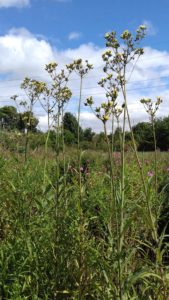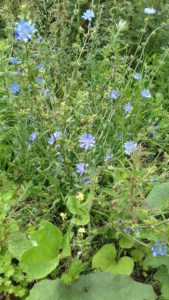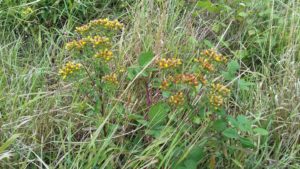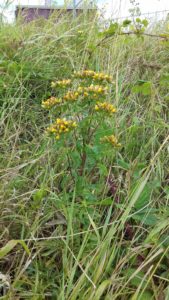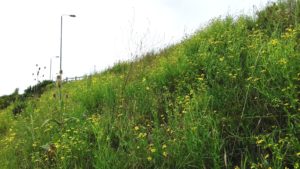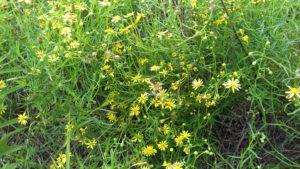Some of the composites (Daisy and Dandelion family – now known as Asteraceae) currently in flower at Thames Road Wetland are pictured below. Contrary to the site’s name, there are a variety of conditions, including reed-swamp and hot, south-facing dry banking. This has given rise to a diverse array of plants with different habitat requirements and preferences.
The Marsh Sow-thistle (Sonchus palustris), the most spectacular native composite in Bexley, is a nationally scarce species that became extinct in the capital some years ago when its last site in London, just 600m away on Crayford Marshes, was badly damaged. Fortunately an astute botanist had saved some seeds and grown them in pots. Plants were introduced to the haven provided by Thames Road Wetland in 2011 and now reach 9 feet tall when in flower, dying back in the winter to leave tall woody branching stems. It appears to be a plant where few seedlings make it to maturity, but once they do they are long-lived. This year, a number of seedlings have been spotted along a ditch margin and a few other places.
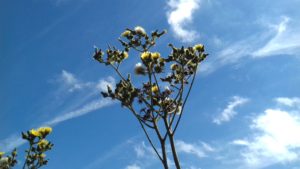
Marsh Sow-thistle flowers and developing seed heads, Thames Road Wetland, 26th July 2017 (Chris Rose)
Chicory (Cichorium intybus) bucks the trend for most native composites to be yellow or white, and is now a plant in cultivation. It was first spotted growing on the sewer pipe bank seven years ago. It would appear that the ponies that roam ‘free’ over this area don’t find it palatable.
Ploughman’s Spikenard (Inula conyzae) has grown in very small numbers on the Thames Road bank for the last few years now, and indicates that there is some chalky or limestone material in the gravelly substrate here. Lacking prominent ray florets (that perform the function of petals in other plants), the flowers are not particularly showy, but are abundant.
Narrow-leaved Ragwort (Senecio inaequidens), is a short-lived perennial from southern Africa. According to DEFRA it was first recorded in the UK as far back as 1836, but only began to spreading in any numbers at the turn of the current millennium, probably from populations established in continental Europe. It favours areas disturbed by human activity, often with bare ground. In Bexley it is frequent in parts of the Belvedere area, less so elsewhere, and occasionally crops up as an isolated roadside plants in the suburban area. It was an early colonist of the open road bank at Thames Road Wetland, soon after widening, and was at first weeded out to favour native vegetation. However, it is unlikely to ever be eradicated from this country and in its current habitats seems fairly benign. Now it has settled down amongst the thin grasses, Perennial Rocket and other colonist species tolerating the hot thin soil here, without overly dominating or casting too much shade, it is left as a cover plant and an important late summer provider of nectar and pollen which continues flowering long after Common Ragwort is over.
Chris Rose. Thames21. Thames Road Wetland Site Manager.

